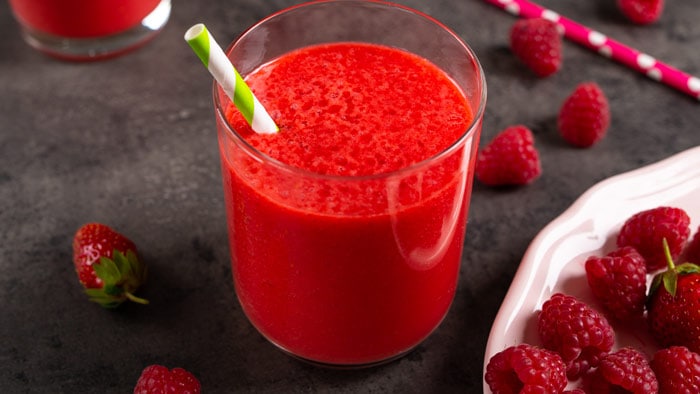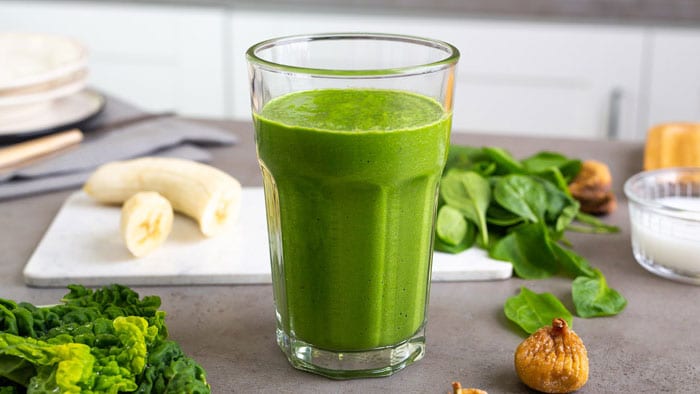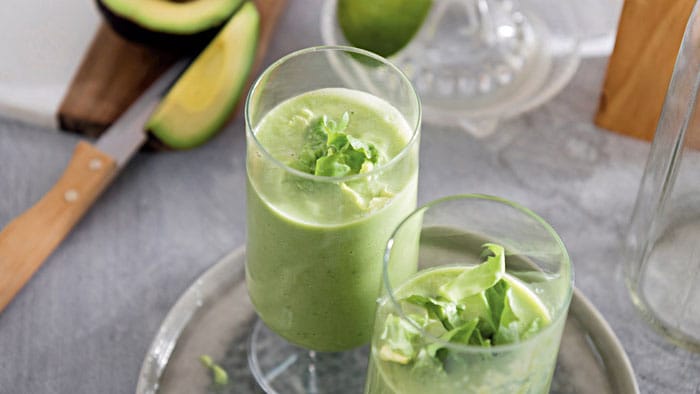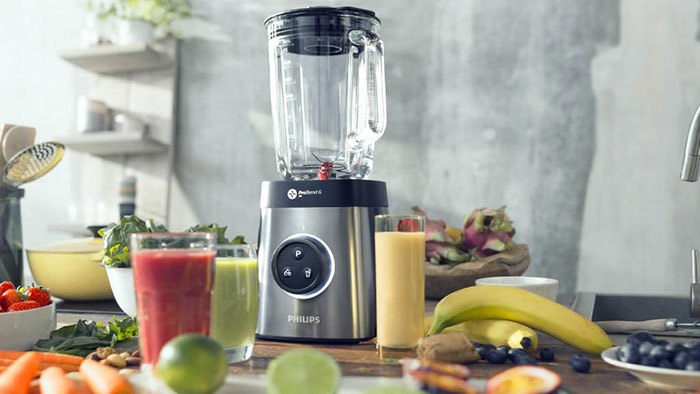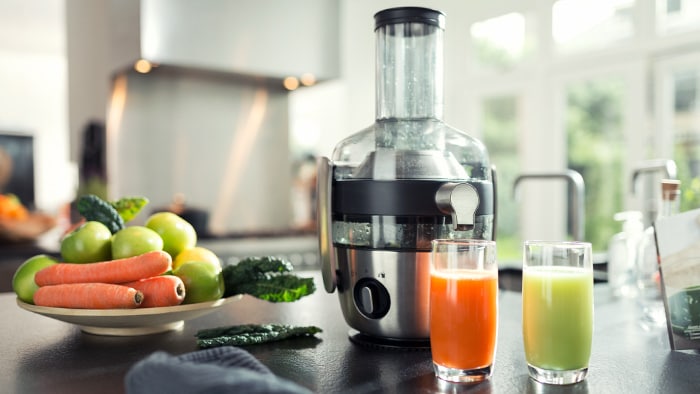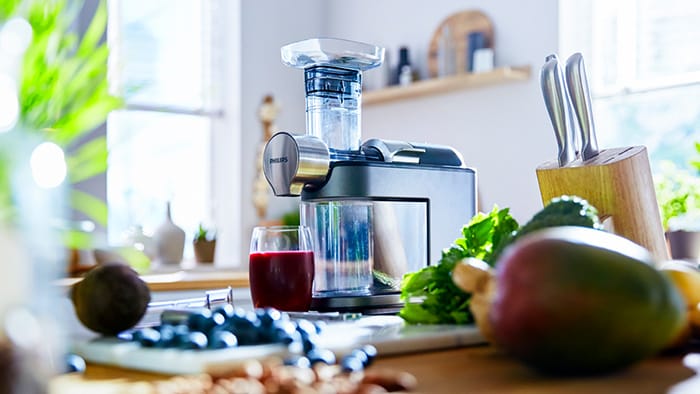Reading time: 5 Min
How to Pick the Best Juicer for You: A Guide to Different Types of Juicers
Read on to find out about the features and benefits of different juicer types available to buy and how to choose the right type of juicer for your home.
We all love a glass of fresh juice when we get up in the morning or get back from exercising. They taste great and the health benefits are second to none.
What Is the Best Juicer for Me?
The best juicer for your home is one that can fit around the needs of your family and the space in your kitchen. There are three main types of kitchen equipment you can use to make healthy drinks like fruit and vegetable juices at home: First, let’s look at how juicers and blenders work.
Juicer vs. Blender: What’s the Difference?
Pulp is the fibrous part of fruit and veg that’s left behind after you’ve got the juice out. Juicers extract the concentrated juice and leave behind the pulp. This means you get a clear, thin and nutrient-packed healthy drink. Blenders process and blend all the ingredients together, including the pulp. That makes them great for thick drinks like smoothies. Chefs love them too for the types of sauces they can make with a blender.
The biggest differences between a juicer and a blender are how they process ingredients and “pulp”.
Masticating vs. Centrifugal Juicers
If it’s smooth juice you want, juicers are better. Now your choice is between a centrifugal or masticating juicer. A masticating juicer extracts juice by forcing fruit and vegetables against and through a mesh at 80 to 100 RPM into a jug or glass using an auger. They’re sometimes called “slow juicers”. The spiral-shaped auger crushes and squeezes the fruit and vegetables you feed into the machine to extract juice. Masticating juicers are popular because they’re great at making high-quality nutrient-rich juices. They also minimise heat and oxidation when in operation which preserves the vitamins, minerals, and enzymes in your juice. The pros of a masticating juicer The cons of a masticating juicer What is a cold press juicer? Some people refer to masticating juicers as “cold press juicers” but this is actually a mistake. Cold press juicers actually extract juice in a completely different way. Instead of crushing and pulping fruit and veg with an auger and pushing it through a mesh, cold press juicers use a hydraulic press or similar tool to squeeze the juice out of pre-prepared produce. Juice from cold press juicers has less pulp, more nutrients and is generally smoother. What is a centrifugal juicer? Centrifugal juicers extract the juice from fruits and vegetables using blades spinning at speeds of between 6,000 and 14,000 RPM. They’re sometimes called “fast juicers.” It’s the centrifugal force in the spinning basket that throws the juice to the side of the basket and through a screen into your jug or glass. The pros of centrifugal juicers The cons of centrifugal juicers Which tastes better - centrifugal or masticating juice? Masticating juicers produce thicker, tastier juice with less foam and more nutrients. However, the difference can be marginal at times so if speed and convenience are really important, choose a centrifugal juicer. Choosing the Best Juicer for Your Home Masticating and centrifugal juicers will produce tasty, healthy drinks for your home and family. When deciding whether you want a centrifugal juicer or a masticating juicer, think about the following:
What is a masticating juicer?
What you need
-
Avance Collection
Juicer (1200W)
HR1922/21
- QuickClean
- 1200 W
- XXL feeding tube
-
Viva Collection
Juicer
HR1855/70
- 800 W
- QuickClean
- 2 l, XL tube
- Drip stop
-
Viva Collection
Masticating juicer
HR1889/71
- XL tube, 70 mm
- Quick clean, in 90 sec
- Easy assembly





